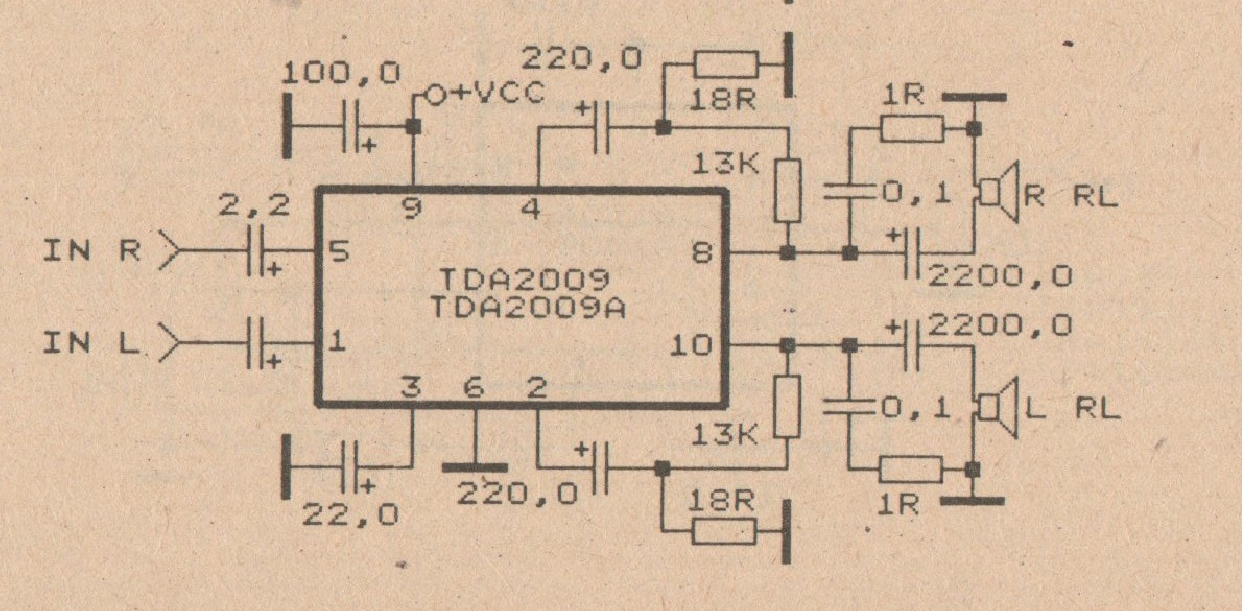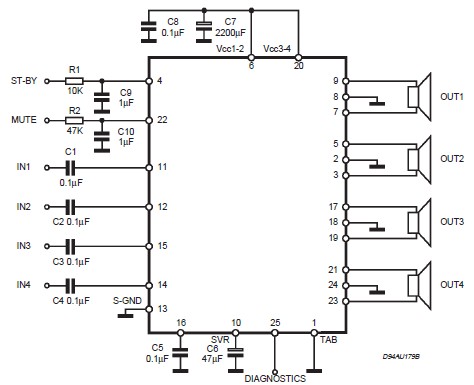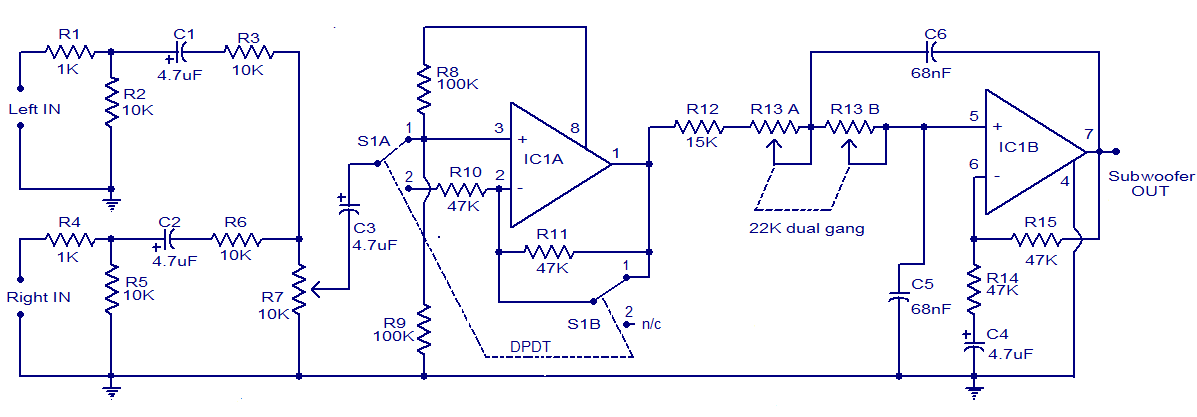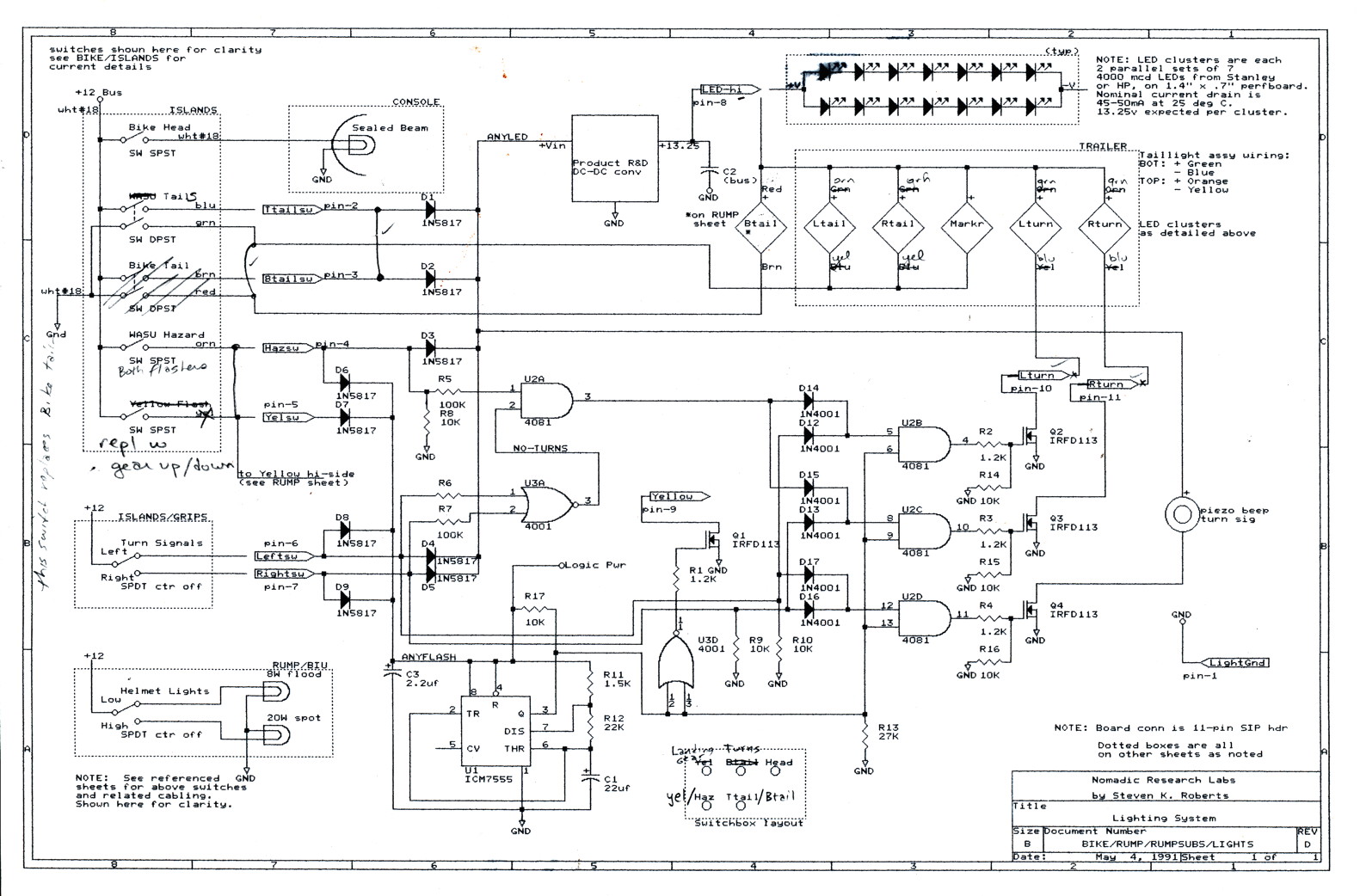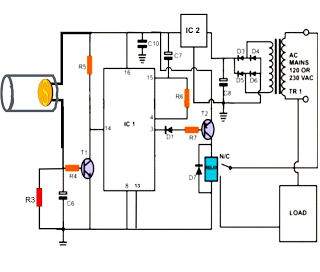
Luxury Car Interior Light

This circuit is straightforward yet valuable, providing a high-quality interior light delay feature. This feature is standard in most modern vehicles, though the automatic dimming version is typically found in higher-end models. This circuit allows for the enhancement of mid-range and second-hand vehicles with an interior light delay that gradually dims after the door is closed. The dimming effect is achieved through pulse-width modulation, which necessitates a triangle wave oscillator and a comparator. While two operational amplifiers (op-amps) are usually required to create an accurate triangle wave, a single op-amp suffices for this application. This leads to the configuration around IC1.A, a relaxation oscillator that generates a square wave output. The voltage at the inverting input exhibits a triangular waveform. This signal can be utilized as long as it is not heavily loaded. The high impedance input of IC1.B will not present problems in this regard. This op-amp functions as a comparator, assessing the voltage of the triangular wave against the voltage across the door switch. When the door is open, the switch closes, creating a short circuit to the vehicle chassis, resulting in a high output from the op-amp and activating T1, which turns on the interior light. When the door is closed, the light remains at full brightness until the voltage across C2 drops to the lower threshold of the triangular wave (approximately 5 V). The comparator then toggles its output in sync with the triangular wave (around 500 Hz), leading to a gradual decrease in pulse width and brightness of the interior light. R8 and C3 safeguard the circuit from voltage spikes that may occur due to the rapid switching of the light. The delay and dimming duration can be modified using R6 and C2, with smaller values resulting in shorter times. The dimming time can be independently adjusted by changing R1, which alters the amplitude of the triangle wave across C1. R7 limits the discharge current of C2; excessive current would significantly shorten the capacitor's lifespan. The circuit's power consumption is minimal, drawing only 350 µA when the lamp is off, especially when using a TLC272 for the dual op-amp. A TL082 consumes about 1 mA, which is not sufficient to quickly deplete a standard car battery, as its self-discharge rate is likely much higher. Alternatives for IC1 include LM358, TL072, or TL062, with R8 needing to be between 47 and 100 ohms. Since T1 operates in either a fully on or fully off state, it generates minimal heat. At a current of 2 A, the voltage drop across the transistor is about 100 mV, resulting in a power dissipation of 200 mW, which is low enough to eliminate the need for a heat sink. Consequently, the entire circuit can remain compact and easily installed in the vehicle, such as behind the roof’s fabric.
This circuit utilizes a simple yet effective design to provide a gradual dimming feature for interior lights in vehicles. The core components include a relaxation oscillator and a comparator, which work together to create a smooth transition in light intensity. The circuit operates efficiently with minimal power consumption, making it suitable for automotive applications where battery life is a concern. The adjustable components allow customization of the dimming effect, accommodating various user preferences. The circuit's robustness against voltage spikes ensures longevity and reliability in automotive environments, where electrical noise can be prevalent. The compact design facilitates easy integration into the vehicle's interior, ensuring that the functionality does not compromise aesthetics. Overall, this circuit represents a practical solution for enhancing the interior lighting experience in mid-range and older vehicles, aligning with modern standards of convenience and comfort.This circuit is much more modest, but certainly still worth the effort. It provides a high quality interior light delay. This is a feature that is included as standard with most modern cars, although the version with an automatic dimmer is generally only found in the more expensive models. With this circuit it is possible to upgrade second hand an d mid-range models with an interior light delay that slowly dims after the door has been closed. The dimming of the light is implemented by means of pulse-width modulation. This requires a triangle wave oscillator and a comparator. Two opamps are generally required to generate a good triangle wave, but because the waveform doesn`t have to be accurate, we can make do with a single opamp. This results in the circuit around IC1. A, a relaxation oscillator supplying a square wave output. The voltage at the inverting input has more of a triangular shape. This signal can be used as long as we do not put too much of a load on it. The high impedance input of IC1. B certainly won`t cause problems in this respect. This opamp is used as a comparator and compares the voltage of the triangular wave with that across the door switch.
When the door is open, the switch closes and creates a short to the chassis of the car. The output of the opamp will then be high, causing T1 to conduct and the interior light will turn on. When the door is closed the light will continue to burn at full strength until the voltage across C2 reaches the lower side of the triangle wave (about 5 V).
The comparator will now switch its output at the same rate of the triangle wave (about 500 Hz), with a slowly reducing pulse width, which results in a slowly reducing brightness of the interior light. R8 and C3 protect the circuit from voltage spikes that may be induced by the fast switching of the light.
The delay and dimming time can be adjusted with R6 and C2. Smaller values result in shorter times. You can vary the dimming time on its own by adjusting R1, as this changes the amplitude of the triangle wave across C1. R7 limits the discharge current of C2; if this were too big, it would considerably reduce the lifespan of the capacitor.
There is no need to worry about reducing the life of the car battery. The circuit consumes just 350 µA when the lamp is off and a TLC272 is used for the dual opamp. A TL082 will take about 1 mA. These values won`t discharge a normal car battery very quickly; the self-discharge is probably many times higher. It is also possible to use an LM358, TL072 or TL062 for IC1. R8 then needs to have a value between 47 and 100 . Since T1 is always either fully on or fully off, hardly any heat is generated. At a current of 2 A the voltage drop across the transistor is about 100 mV, giving rise to a dissipation of 200 mW.
This is such a small amount that no heatsink is required. The whole circuit can therefore remain very compact and should be easily fitted in the car, behind the fabric of the roof for example. 🔗 External reference
This circuit utilizes a simple yet effective design to provide a gradual dimming feature for interior lights in vehicles. The core components include a relaxation oscillator and a comparator, which work together to create a smooth transition in light intensity. The circuit operates efficiently with minimal power consumption, making it suitable for automotive applications where battery life is a concern. The adjustable components allow customization of the dimming effect, accommodating various user preferences. The circuit's robustness against voltage spikes ensures longevity and reliability in automotive environments, where electrical noise can be prevalent. The compact design facilitates easy integration into the vehicle's interior, ensuring that the functionality does not compromise aesthetics. Overall, this circuit represents a practical solution for enhancing the interior lighting experience in mid-range and older vehicles, aligning with modern standards of convenience and comfort.This circuit is much more modest, but certainly still worth the effort. It provides a high quality interior light delay. This is a feature that is included as standard with most modern cars, although the version with an automatic dimmer is generally only found in the more expensive models. With this circuit it is possible to upgrade second hand an d mid-range models with an interior light delay that slowly dims after the door has been closed. The dimming of the light is implemented by means of pulse-width modulation. This requires a triangle wave oscillator and a comparator. Two opamps are generally required to generate a good triangle wave, but because the waveform doesn`t have to be accurate, we can make do with a single opamp. This results in the circuit around IC1. A, a relaxation oscillator supplying a square wave output. The voltage at the inverting input has more of a triangular shape. This signal can be used as long as we do not put too much of a load on it. The high impedance input of IC1. B certainly won`t cause problems in this respect. This opamp is used as a comparator and compares the voltage of the triangular wave with that across the door switch.
When the door is open, the switch closes and creates a short to the chassis of the car. The output of the opamp will then be high, causing T1 to conduct and the interior light will turn on. When the door is closed the light will continue to burn at full strength until the voltage across C2 reaches the lower side of the triangle wave (about 5 V).
The comparator will now switch its output at the same rate of the triangle wave (about 500 Hz), with a slowly reducing pulse width, which results in a slowly reducing brightness of the interior light. R8 and C3 protect the circuit from voltage spikes that may be induced by the fast switching of the light.
The delay and dimming time can be adjusted with R6 and C2. Smaller values result in shorter times. You can vary the dimming time on its own by adjusting R1, as this changes the amplitude of the triangle wave across C1. R7 limits the discharge current of C2; if this were too big, it would considerably reduce the lifespan of the capacitor.
There is no need to worry about reducing the life of the car battery. The circuit consumes just 350 µA when the lamp is off and a TLC272 is used for the dual opamp. A TL082 will take about 1 mA. These values won`t discharge a normal car battery very quickly; the self-discharge is probably many times higher. It is also possible to use an LM358, TL072 or TL062 for IC1. R8 then needs to have a value between 47 and 100 . Since T1 is always either fully on or fully off, hardly any heat is generated. At a current of 2 A the voltage drop across the transistor is about 100 mV, giving rise to a dissipation of 200 mW.
This is such a small amount that no heatsink is required. The whole circuit can therefore remain very compact and should be easily fitted in the car, behind the fabric of the roof for example. 🔗 External reference
